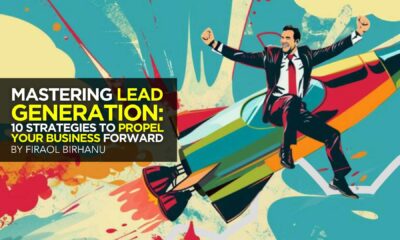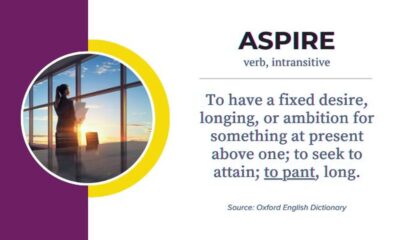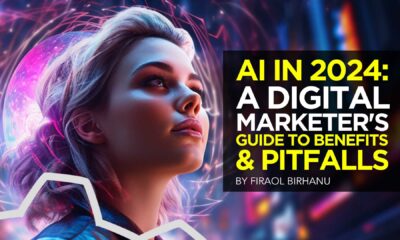MARKETING
The Difference Between Content Marketing & Content Strategy (& Why You Need Both)

In a world where people pay money just to escape ads, content marketing allows you to connect with prospects organically.
If you’ve dabbled in it, you’re one of those who might have begun creating content and posting regularly on your blog.
Soon enough, you may begin noticing a few changes.
People are starting to engage with you.
You’re seeing growth.
But it’s not what you expected.
You expected to soar like other brands using content marketing, but instead, you’re stuck with mediocre ROI.
You’re spinning your wheels.
If this is you, you need to get clear on one thing:
Content marketing alone isn’t enough to build a powerful brand and real ROI.
You also need content strategy.
How Are Content Marketing & Content Strategy Different?
Content marketing and content strategy complement each other perfectly.
But they’re not the same thing.
Here’s what makes them different.
What Is Content Marketing?
Content marketing is simply the creation, publishing, and distribution of great content.
It works because it doesn’t directly sell a product or service.
For instance, look at this post from The Tony Robbins Blog:

As the title suggests, this blog is about strengthening relationships through learning how to apologize.
Taken by itself, the content doesn’t promote any service.
It’s simply a thoughtful, value-rich guide for people struggling with saying sorry.
This is an example of powerful content marketing.
Since the blog belongs to Tony Robbins’ website, it builds trust in readers and brings them closer to hiring Tony Robbins as their life or business coach.
Here are other resources you can find on the website:

As a whole, content marketing is organic marketing.
It involves giving value to people so they recognize your brand as a trustworthy solution to their needs and desires.
What Is Content Strategy?
Content strategy, on the other hand, is the foundation on which successful content marketing is built.
Think of it as a map. If content marketing is the journey toward brand success, content strategy is the blueprint that directs it.
So, how does content strategy work?
1. Content Strategy Answers the Question ‘Why’ You’re Publishing Content
Every piece of content you publish should be centered around a goal. And content strategy helps you determine exactly what your goal is.
For instance, you write a lead magnet to grow the size of your email list. You compose emails to gain clicks to your website. You write blog posts to establish authority in your industry.
All these pieces of content are created at the right time, set before the right audience, and then measured for success.
See how content strategy works?
With the right strategy in place, you’ll never again create a random piece of content that doesn’t get you closer to your content marketing goals.
2. Content Strategy Determines Who You’re Reaching with Your Content Marketing
Part of content strategy is finding out exactly who your audience is.
- What are their major pain points?
- Why are they reading your content?
- How can your product or service help them improve their lives?
Imagine writing a letter to no one in particular.
No matter how beautiful the words you use are, your letter will lack real feeling and substance.
On the other hand, writing to someone you know deeply will make your words and paragraphs come alive.
Also, because you know who this person is, you know what he wants or needs to hear.
Here are a few tips for implementing your content strategy to speak to your audience.
- Create content personas. Gather information about your audience and make fictional characters you can address each time you write content.
- Remember the buyer’s journey. Your audience will be in either the awareness, consideration, or decision state when they read your content. You need to know what pushes their hot buttons in each one of these stages.
3. Content Strategy Is About Deciding What Kind of Content You’ll Publish
There’s a ton of different kinds of content you can publish online.
There are blogs, infographics, ebooks, podcasts, and social media messages.
What’s more, you can publish long or short content.
You can publish content on your website, on social media, or as a guest blogger on another influencer’s site.
Content strategy is taking a deep look into your brand’s needs and goals.
It’s finding out exactly what kind of content you need, where you should promote it, and setting a schedule to create and publish it.
4. Content Strategy Is About Deciding Who Will Create Your Content
If your company is small, you might have to write all your content yourself at first.
However, it doesn’t have to be like this forever.
As you grow, you can set a budget for high-quality content.
You can hire expert writers to keep your content flowing steadily.
You can hire a content manager to help you with your content calendar.
A content strategist is also an excellent addition to your team.
5. Content Strategy Is Setting Metrics to Measure Content Marketing Success
As you pursue your content marketing goals, it’s important to be aware of how well each piece of content you publish is doing.
For example:
- Do your blog posts hold readers’ attention?
- Are your emails gaining clicks to your website?
- Are your case studies converting prospects into buyers?
Content strategy will help you answer these questions because as you work on your strategy, you come up with metrics to determine content success.
Some of these include bounce rate, time on page, and scroll depth.
Why Content Strategy Matters
Content marketing is good, but without content strategy, it’s like going on a trip without a set destination.
Without the right strategy in place, you’ll waste valuable time and energy writing content that’ll only earn you mediocre ROI.
On the other hand, when you use content strategy as the foundation and blueprint of your content marketing efforts, you’ll see amazing results.
Every piece of content you create will be a well-chiseled puzzle piece that helps craft your brand’s story and message.
More Resources:
Image Credits
All screenshots taken by author, February 2020
MARKETING
Elevating Women in SEO for a More Inclusive Industry
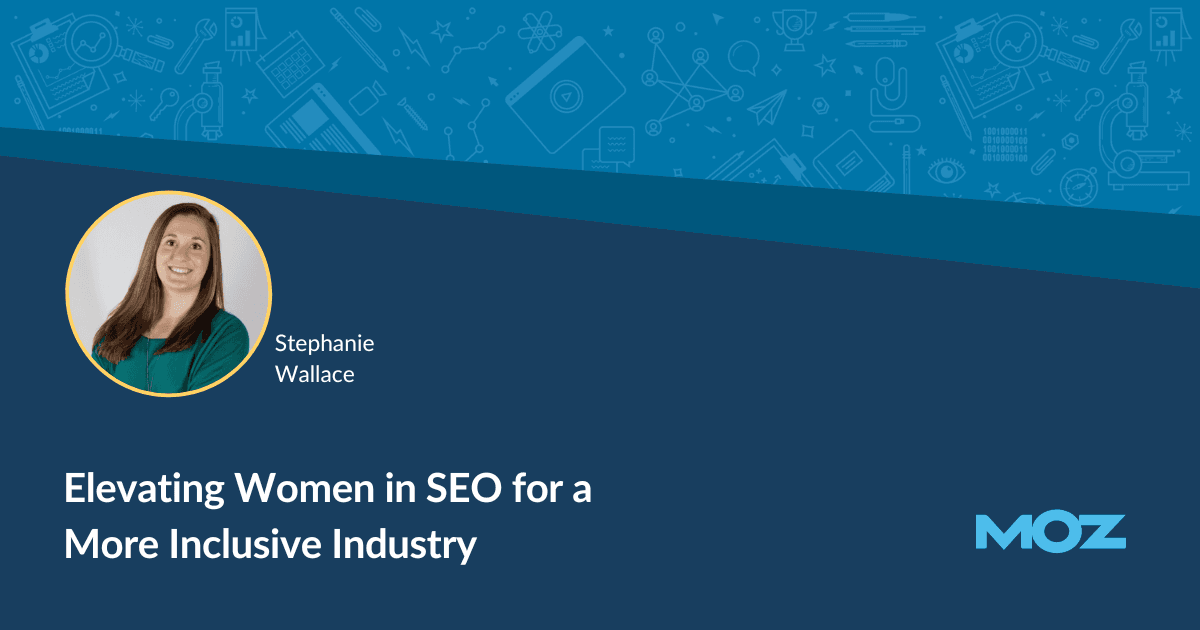
Know your value
It’s essential for women to recognize their worth and advocate for themselves in the workplace. It’s important to know your value and not be afraid to own it.
For a lot of women, myself included, doing this can feel horribly unnatural. It’s often hard to admit that you’re good at things or that you have big ambitions because of how society treats us. I, for example, often struggle with writing my own bio or answering questions about my career path and successes. I even struggled while writing this article in many ways, describing my personal experiences and opening myself up.
It’s easy to underestimate our value and downplay our contributions, but it’s essential to recognize the unique skills, talents, and perspectives that we bring to the table. So, take a moment to reflect on your achievements, expertise, and strengths. Don’t be afraid to speak up and advocate for yourself in meetings, negotiations, and performance reviews. While it may sound daunting, there are actionable steps you can take to get started.
Track your achievements and, as much as possible, quantify the impact. Document projects you’ve worked on, results you’ve achieved, and positive feedback or recognition you’ve received from colleagues or supervisors. Use data and metrics to demonstrate the value you bring to the table. And when the time comes to discuss salary and benefits, you will be prepared with everything you need to ask for what you deserve. Try writing a script and reading it aloud to prepare yourself. It may feel silly, but it works.
More tactically, do your research. Find salary benchmarks from places like Glassdoor or LinkedIn. Use Fishbowl to find people talking candidly about salary ranges for roles similar to yours. There are multiple “Bowls” dedicated to salary, compensation, and negotiations. You may just find people comparing notes on salary from your company.
Remember, you deserve to be recognized and rewarded for your hard work.
For those in leadership positions, we can advocate for more transparency around salary and compensation. That doesn’t have to mean that an entire company has access to everyone’s personal income, but it could mean that, as a company, you share salary ranges for different positions based on experience. It could mean that you clearly define the factors that go into determining salary or a raise and how these factors are weighted. Every company is different, but the goal should be to foster a culture of transparency and accountability.
Overcoming imposter syndrome
Overcoming imposter syndrome and self-doubt is key to promoting yourself and establishing a strong professional identity. It’s natural to experience moments of insecurity and self-doubt. It’s natural to have a sense of not belonging. I know I have certainly experienced it. But just because you feel impostor syndrome or you’re not sure you can do something doesn’t mean you shouldn’t try. Don’t disqualify yourself.
In my experience, men more often specialize in technical SEO than women, which can cause a lot of women to doubt themselves around the more technical side of things. Data from Lidia’s article on the gender divide in topics illustrates this very well. Last year, men wrote the overwhelming majority of content on technical SEO and AI. In contrast, women tended to author more of the “soft” topics. This could be related to women in our industry feeling like they can’t or shouldn’t author content on certain technical topics.
But it’s essential not to let imposter syndrome hold you back from reaching your full potential. So, next time you feel a sense of not belonging, remind yourself of your accomplishments, resilience, and unwavering determination. And remember, you are not alone — many successful women have faced imposter syndrome and overcome it, and so can you.
Make your own credentials
In today’s competitive world, it’s not enough to rely on others to recognize your talents and achievements — you need to take control of your own narrative and actively promote yourself.
You don’t have to write a dissertation to be considered an expert. You also don’t have to share a brand new idea or point of view to be considered a thought leader. The key is to find inefficiencies and unique perspectives — whether about the industry as a whole or specific to SEO specialties or verticals — and be vocal about it.
Leverage social media and your personal or company website as a platform to express your opinions and share your ideas. Join SEO communities like Sisters in SEO on Facebook or Women in Tech SEO on Slack. These are your peers who will not only happily support your thought leadership efforts but also serve as a sounding board and support system for you. Seek out speaking opportunities and podcast guest appearances. Submit your work and yourself for awards. Don’t be afraid to put yourself out there and showcase what you bring to the table.
I created my own website a few years back to showcase my expertise. With options like WordPress and Wix, it’s easier than ever to get a site up and running. It’s also relatively inexpensive to maintain. Today, I use it as a portfolio that showcases all of my accomplishments, from publications to speaking engagements.
Just remember — innovation is great, but it’s not a requirement. A new perspective on something old can be just as valuable as a shiny new idea.
Depth over breadth
Not everybody has to be (or can be) an expert on all things SEO. But you can become an expert on a very specific topic or aspect of SEO. You can also work to become the local expert within your company, city/region, or even a particular vertical. The goal is to be the go-to person about a certain topic or facet of the industry. Maybe you want to be the voice of local SEO like Darren or the data scientist like Annie. Use that angle to start small and master your niche.
Building your own credentials isn’t magic. It just feels that way when it works.
Creating a clear and impactful online presence that reflects what you do and what you stand for will allow you to stand out as a true thought leader. Strong personal branding also provides an opportunity for women in SEO to gain valuable support by connecting with other female leaders. The more value you can provide, the stronger your credentials will be, and the wider your reach can grow.
MARKETING
A Recap of Everything Marketers & Advertisers Need to Know

When rumors started swirling about Twitter changing its name to X, I couldn’t believe it at first. But then, in July 2023, as I searched for my favorite blue icon on the phone, I found a black icon instead. It had actually happened!
MARKETING
The key to correcting the C-suite trust deficit

Take a moment to search “CMO tenure” and you’ll find a wide variety of content discussing the short tenure of CMOs and how it’s among the shortest of roles in the C-suite. If you dive deeper, you’ll find that CEOs don’t seem to trust CMOs.
Boathouse’s CMO Insights study (registration required) noted several sobering conclusions:
- 34% of CEOs have great confidence in their CMOs.
- 32% of CEOs trust their CMOs.
- 56% of CEOs believe their CMO supports their long-term vision.
- And only 10% of CEOs believe their CMO puts the CEO’s needs before their own.
If these statistics also apply to the CMO’s entire organization, then it’s clear we have a trust problem with marketing leadership.
If you haven’t read Patrick Lencioni’s “The Five Dysfunctions of a Team,” I consider it required reading for anyone in any leadership role. In his book, Lencioni builds a pyramid of dysfunctions that need to be addressed for a team to succeed. The foundational dysfunction — with which one cannot build a successful team — is “absence of trust.” We see it at scale with marketing organizations today.
Introducing objectivity through data
In “Hamlet,” Shakespeare writes, “There is nothing either good or bad, but thinking makes it so.” Each organization that makes up a company looks at the company from a different perspective. What marketing sees as positive, finance may see as negative. But who’s right? No one.
Usually, there is no objectivity because leadership comes up with an idea and we execute it. It’s like the fashion proverb “Beauty is in the eye of the beholder.” Unfortunately, we’re going to struggle to run a profitable organization if it’s run like a fashion show.
Therefore, we need to introduce objectivity to how we work. Leadership needs to come together to agree on goals that align with the goals of the broader organization. One element of this conversation should be an acknowledgment that this is turning a ship.
Often leaders — especially those without marketing backgrounds — are likely to expect instant gratification. It’s going to take time to turn the ship and you and your team would do well to set reasonable expectations right away.
Dig deeper: KPIs that connect: 5 metrics for marketing, sales and product alignment
Aligning goals and metrics across the organization
With goals in hand, we need to assign metrics to their progress and agree on the source(s) of truth. Once these objective measures are in place, perspective doesn’t matter. 2 + 2 = 4 regardless of whether you’re in HR or accounting.
Every public road has a speed limit and whether you’re in compliance with it has nothing to do with your perspective. If you’re above it, you’re wrong and subject to penalties. Referring to the fashion example, it’s not a fashion show where some people like a dress and others don’t.
By using data to objectively measure marketing’s progress within the organization and having the rest of the leadership buy into the strategy, we build trust through objectivity. Maybe the CEO would not have chosen the campaign the marketing team chose.
But if it was agreed that a >1 ROAS is how we measure a successful campaign, it can’t be argued that the campaign was unsuccessful if the ROAS was >1. In this example, the campaign was an objective success even if the CEO’s subjective opinion was negative.
Data-driven campaign planning
Within the marketing organization, campaigns should always be developed with measurement top of mind. Through analysis, we can determine what channels, creative, audiences and tactics will be most successful for a given campaign.
Being able to tell the leadership team that campaigns are chosen based on their ability to deliver measured results across metrics aligned to cross-departmental goals is a powerful message. It further builds trust and confidence that marketing isn’t run based on the CMO’s subjective opinions or gut decisions. Rather, it’s a collaborative, data-driven process.
For this to be successful, though, it can’t just be for show, where we make a gut decision and direct an analyst to go find data to back up our approach. This would be analytics theater, which is a perversion of the data. Instead, tell the analyst what you think you want to do and ask them to assess it.
For the rest of the organization’s leadership, ask questions when the marketing team presents a campaign. Find out how they came up with the strategy and expect to hear a lot about data — especially the metrics you all agreed would support the company’s overarching goals.
Dig deeper: 5 failure points of a marketing measurement plan — and how to fix them
Data literacy: Building credibility through transparency
Building trust doesn’t happen overnight, but a sustained practice of using data to drive marketing leadership’s decisions will build trust if the metrics ladder up to the organizational goals and all of leadership is bought into the measurement plan.
Over time, this trust will translate into longer tenure and more successful teams through building the infrastructure needed to tackle Lencioni’s five dysfunctions.
Opinions expressed in this article are those of the guest author and not necessarily MarTech. Staff authors are listed here.
-
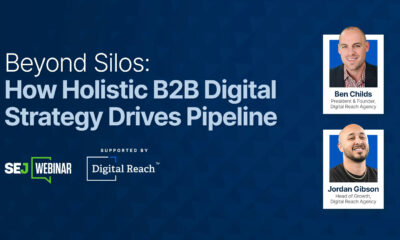
 SEO7 days ago
SEO7 days agoHow To Drive Pipeline With A Silo-Free Strategy
-

 PPC7 days ago
PPC7 days ago26 Ready-to-Go AI Prompts for Social Media
-

 MARKETING6 days ago
MARKETING6 days agoGenerative Engine Optimization Framework Introduced in New Research
-
SEARCHENGINES4 days ago
Daily Search Forum Recap: May 3, 2024
-

 MARKETING5 days ago
MARKETING5 days agoLet’s Start Treating Content More Like We Treat Code
-
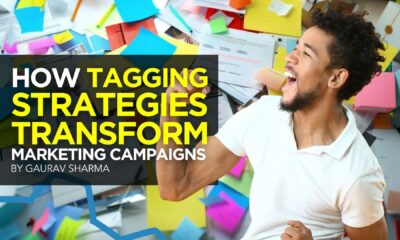
 MARKETING4 days ago
MARKETING4 days agoHow Tagging Strategies Transform Marketing Campaigns
-

 MARKETING5 days ago
MARKETING5 days agoTinuiti Recognized in Forrester Report for Media Management Excellence
-
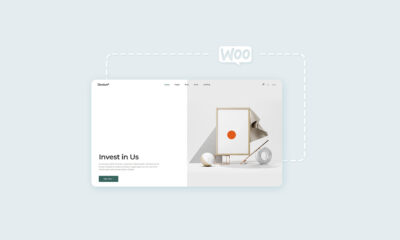
 WORDPRESS7 days ago
WORDPRESS7 days ago20 Best WooCommerce Extensions for Your WordPress Shop




